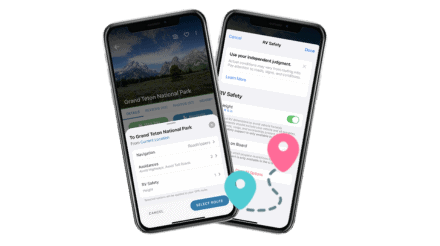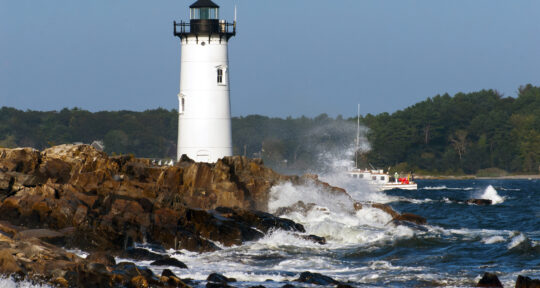As part-time RVers, my family has spent years exploring the U.S. in our travel trailer. We’ve played weekend warrior to explore locales close to home, taken advantage of school breaks to set off on weeklong getaways, and even spent months roadschooling and remote working from the road during the pandemic.
But while we love our time spent on the road, we also cherish having a home base to come back to between our journeys. It’s this desire to have the best of both worlds when it comes to maintaining a brick-and-mortar home and a tiny home on wheels that makes part-time RV travel so appealing to us, and the millions of other RV enthusiasts who take to the road whenever their schedules allow.
Whether you’re considering buying your first RV or already own a rig and are looking to make the most of it, here’s what you need to know about traveling part-time with a recreational vehicle.
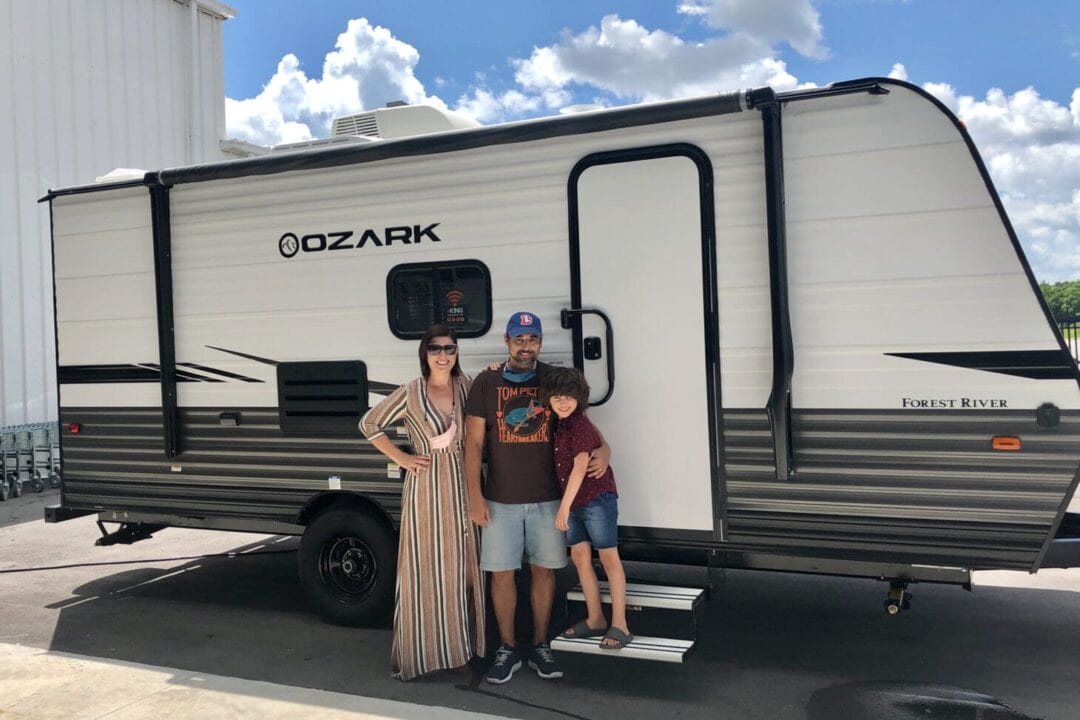
Considerations for part-time RV living
An RV is your second home, and just like your sticks-and-bricks residence, you’ll need to take care of logistics and set yourself up for success, both when you’re on the road and when you’re not. Here are a few things to consider.
Costs
Owning an RV comes with some obvious, and less obvious, expenses. When setting a budget for your rig, keep in mind additional costs, such as insurance, storage fees, and increased gas expenditures, in addition to establishing a savings account for potential maintenance. You’ll also need to budget for RV-specific purchases like hoses and wheel chocks, as well as any niceties you may want to help make your camping experience more enjoyable.
Storage
While it’s fun to think about all the time you’ll spend camping, you also need to consider where you’ll store your RV when not in use. If you own a home or land where it can be stored, you can save on storage fees and use your RV as extra living space or for guests. However, keep in mind that setting up an RV pad on your property will come with some up-front costs.
If you can’t store your rig on your property, you’ll need to look for RV storage. A quick online search will show you storage facilities in your area, and prices generally vary based on the size of your rig. Sometimes these facilities have a waiting list, so you’ll want to secure storage options before bringing home your RV. Keep in mind that you’ll likely need an RV cover, locks, and tire covers to properly store your rig, depending on the climate.
Insurance
Just like any vehicle, insuring your RV is a must. If you’re purchasing from a dealership, it will often offer discounted rates through partner insurance companies. However, know that this is not your only option. Shop around for rates, including with your current car insurance company, and determine which plan works best for you.
Maintenance
Ongoing wear and tear will inevitably cause things to break. You can often do small repairs yourself with tips found online, or by watching YouTube tutorials. Larger repairs may require a trip to a service center or help from a mobile RV technician.
Whether you regularly use your rig or keep it in storage for long periods, you’ll also have some ongoing preventative maintenance to perform. Be sure to inspect your roof and seals regularly, check your batteries and propane tanks, examine tires, and test all safety equipment before any trip. You should also flush your tanks before putting your RV back into storage, and if you live in colder climates you’ll need to winterize before temperatures dip below the freezing mark.
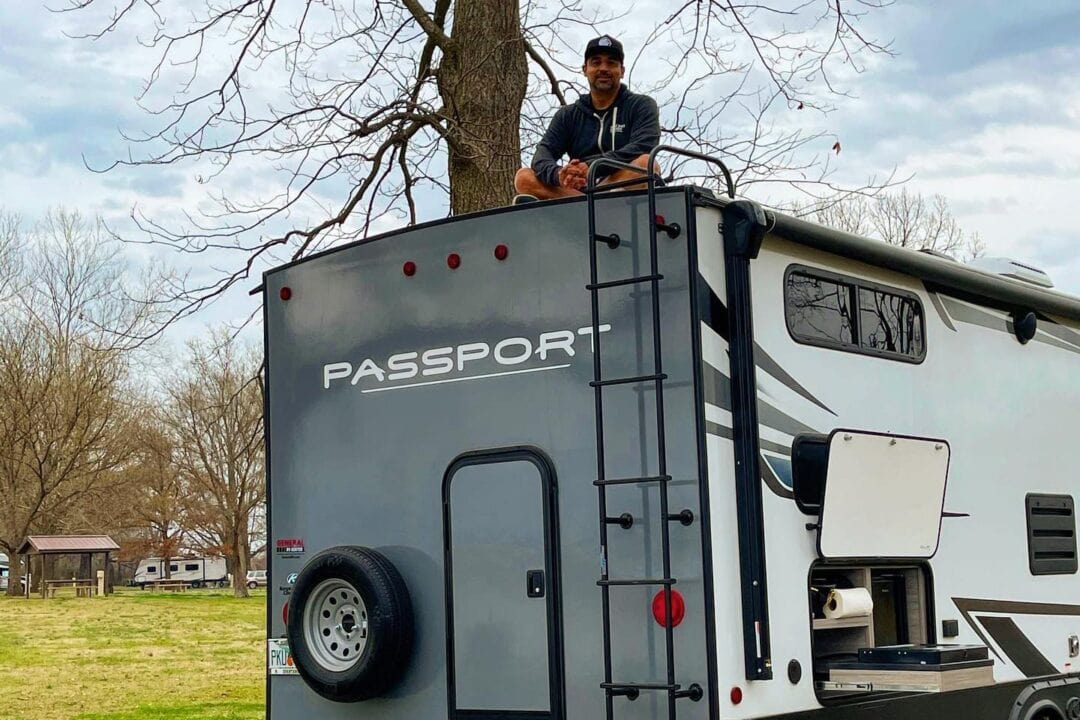
What to look for in a rig
When looking to purchase a new (to you) RV, you’ll want to consider how many people you’ll be traveling with, how much time you’ll spend on the road, and how you plan to utilize your rig while traveling.
Party size
Start by thinking about who you’ll bring along. When tallying up who’s in your party, plan for the number of people who will routinely be traveling with you, versus planning for scenarios where you might have a larger crowd.
If you’re a retired couple planning to travel as a twosome, but may occasionally bring grandchildren along, you should look for a couple’s unit with couches and sofas that can be converted to beds for extra sleeping space when you need it. Conversely, a large family will want to account for comfortable sleeping arrangements for every family member and will likely not want to convert furniture each night—think bunkhouses.
Time spent on the road
You’ll also need to consider how much time you’ll be spending on the road. Weekend warriors can easily pack up and get going with a smaller rig, whereas those looking to set off on farther-flung adventures may want to have more room to spread out on extended getaways. Things such as tank sizes and onboard generators also become more important as you think about taking longer vacations.
How you’ll use your rig
Do you need space for remote work and schooling? Do you plan to use your RV only as a place to crash or will you have lots of indoor time? Do you want to travel with large toys, like ATVs, motocross bikes, etc.? Are you planning to park it somewhere, like a seasonal spot, where your RV will remain mostly stationary? Knowing how the space inside your rig will be utilized once you’re at your destination will also help determine what size and layout you need.
Still can’t decide?
When in doubt, it’s best to start small as you’ll find it easier to navigate and locate camping spots that accommodate a smaller rig. First-time RVers and those on a budget may also want to avoid getting a motorhome, which not only has a higher up-front cost, but also higher maintenance costs. Choosing a small, inexpensive towable is a convenient way to test the waters when RVing, and you can always upgrade in the future.
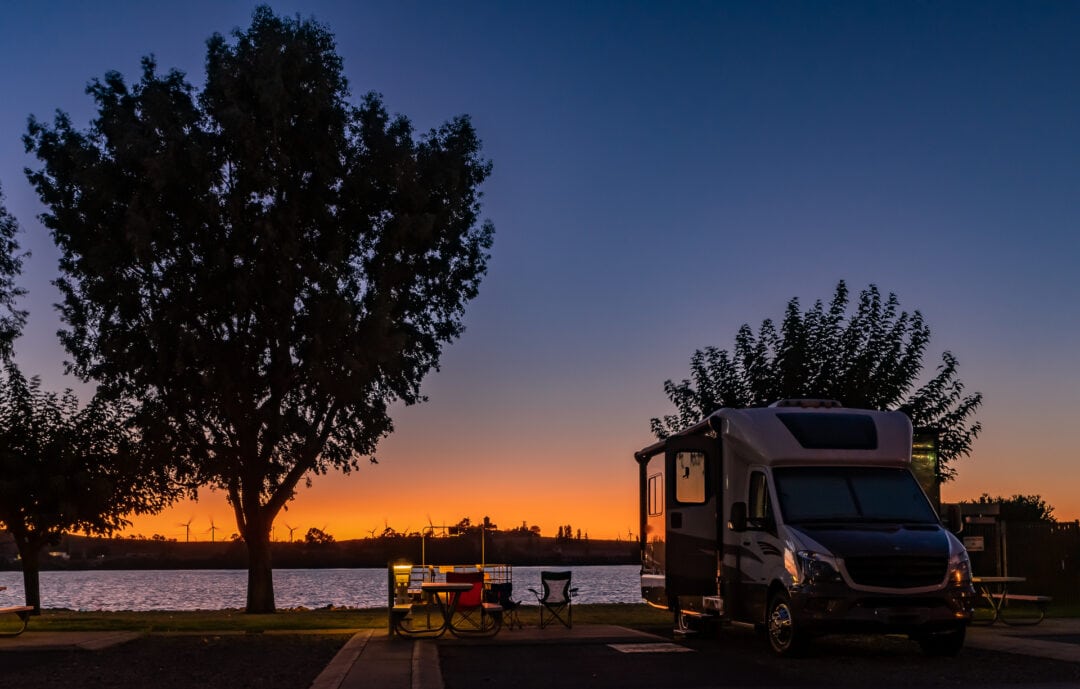
Planning and booking your RV travels
Touring the country with your tiny home in tow is fun, but also requires planning, especially during peak travel seasons and in highly sought-after destinations. Here’s what to do as you chart your course.
Your route
When traveling with an RV, have a clear path that can accommodate the height and weight of your RV and avoid off-road style conditions. You’ll want to map your trip out in advance to avoid ending up on roads that you can’t travel on. A Roadtrippers membership account allows you to enter your RV dimensions to help when planning a route and showcases points of interest along your path.
Looking for campsites
Due to the growing popularity of RVing, you’ll want to book campground reservations in advance. Book reservations at national park, state park, and private campgrounds as soon as you make your vacation plans. Campendium has a map format to showcase campground options in a selected area, along with reviews, in addition to potential boondocking locations. Be sure to know what your campground’s cancellation policy is should plans change, and what the process is for after-hours check-in, if necessary.
10 mistakes beginner RVers should avoid
Prepping for travel
Packing your RV for each trip can be a daunting task. Consider which items you’d like to keep in your rig full-time to help expedite this process before each trip. Prioritize packing the essentials, and don’t sweat about forgotten items that can easily be replaced while on the road.
Before leaving home, be sure to ask the United States Postal Service to hold your mail, fill any prescriptions you’ll need, set all bills to auto-pay, and secure your home, including ensuring all doors and windows are locked, and setting any alarms.
Traveling part-time in your RV
You know where you’re heading, and you’re packed to go. Now it’s time to hit the road for adventure. Here are a few extra bits of advice to follow along the way.
Maximize your time
Between work and school schedules, many part-time travelers have limited vacation time available. Whenever possible, maximize school breaks and holidays to extend the time spent on your trip. Plan to hit the road as soon as school lets out or your final afternoon meeting ends. You can log several hours of drive time in the late afternoon hours, giving you more time to enjoy your destination.
After arriving at your campsite, think about how to make the most of this time away and prioritize your “must-do” activities before exploring other destinations on your wish list. Plan your days to start early, before the crowds arrive, and rest up back at the campsite come afternoon. When traveling during the longer summertime days, you can plan additional adventures later in the day, after the crowds have subsided.
Travel days
When looking at the distance between destinations, know that getting from one location to the next will take longer when traveling with an RV. Allow yourself plenty of extra time to get to your destination and, whenever possible, look for gas stations that accommodate larger rigs, such as Buc-ee’s, Flying J, Pilot, and Love’s. Know which side of your truck or motorhome needs to face the pump, as well as what type of fuel you need, before maneuvering your way into the station. Bring along extra gas in a gas can, along with a roadside emergency kit, to ensure you’re prepared should anything go awry.
What you need to know before driving your RV for the first time
Research any roadside stops you’d like to make along your path to ensure there’s enough room to park your rig. Some restaurants, such as Cracker Barrel, offer bus and RV parking, but it never hurts to have ample snacks on hand. And remember that you can always pop into your RV’s fridge or pantry to grab food items while at a rest stop.
Check the forecast
Like other types of trips, you need to plan accordingly for the weather conditions on the road, as well as at your destination. Be sure you have plenty of propane on hand in case of a cold snap and look for campsites with electric hookups to run your air conditioning when headed to warmer spots. At the end of a long day of exploration, you’ll want to come back to an RV that’s at a comfortable temperature.
During inclement weather, bring in your awning and secure any loose items, such as folding chairs. Pack books and activities to stay entertained on rainy days. While storms can thwart even the best-laid plans, some of my favorite RVing memories are from days when my family bonded over a spirited game of Uno.
Perhaps the best part of traveling in your second home is that you have everything you need to have an amazing vacation right at your fingertips, so allow yourself to slow down and savor the experience.

